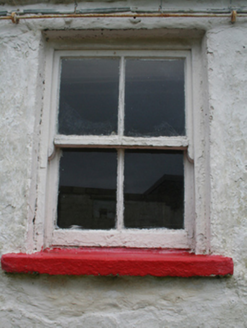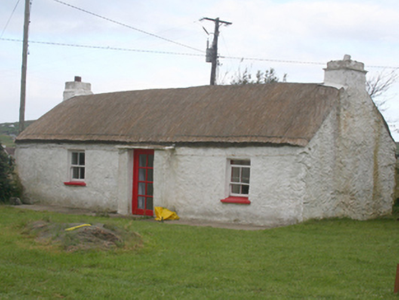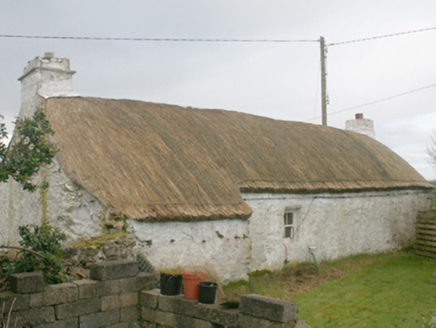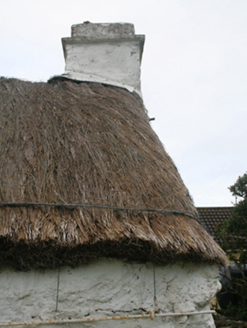Survey Data
Reg No
40900205
Rating
Regional
Categories of Special Interest
Architectural, Technical
Original Use
House
In Use As
House
Date
1780 - 1820
Coordinates
242392, 456944
Date Recorded
14/10/2008
Date Updated
--/--/--
Description
Detached three-bay single-storey vernacular house, built c. 1800, having central windbreak porch to front, and bed outshot to rear. Round pitched flax thatch roof with latticed restraining wire, iron rod and iron pegs, limewashed rendered chimneystacks to gables. Limewashed render over rubble stone walls. Square-headed window openings with stone sills, and four-over-four pane horned timber sliding sash windows. Square-headed door opening to windbreak porch having replacement glazed timber door. Set in own grounds off road bound by hedge.
Appraisal
This appealing and relatively intact example of a vernacular house retains its early form and character, and is an appealing feature in the scenic rural landscape adjacent to the south of Malin Head to the extreme north of Inishowen. Its integrity is enhanced by the retention of some of its salient fabric including timber sliding sash windows, which help give this building a pleasing vernacular appearance. Of particular interest in the survival of the thatch roof, although recently renewed, which is now sadly becoming increasingly rare in Donegal. The rounded roof is a typical feature of thatched houses located close to the sea in exposed areas in the north-west of Ireland, while the pegs to the eaves were used to tie ropes (and sometimes nets) over the roof to secure it against the prevailing winds, as is the case here at Ardmalin. Modest in scale, it exhibits the simple and functional form of vernacular building in Ireland. It retains some characteristic features of the vernacular tradition to the area, including a windbreak porch, and a bed outshot to the rear. The form of this building, having chimneystacks to the gable ends and a central doorway suggests that this building is of the ‘direct entry’ type that is characteristic of the vernacular tradition in north-west Ireland. This house represents a relatively intact surviving example of a once ubiquitous building type in the rural Irish countryside, and is an addition to the vernacular heritage of County Donegal.







